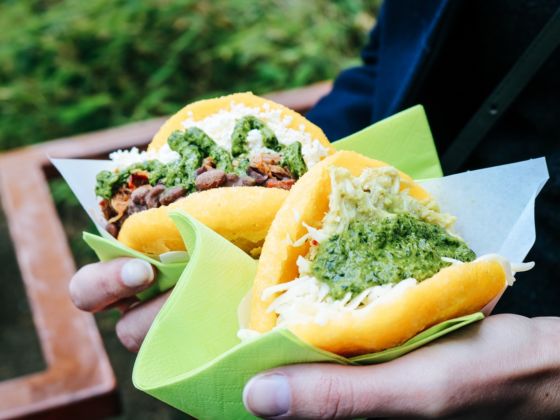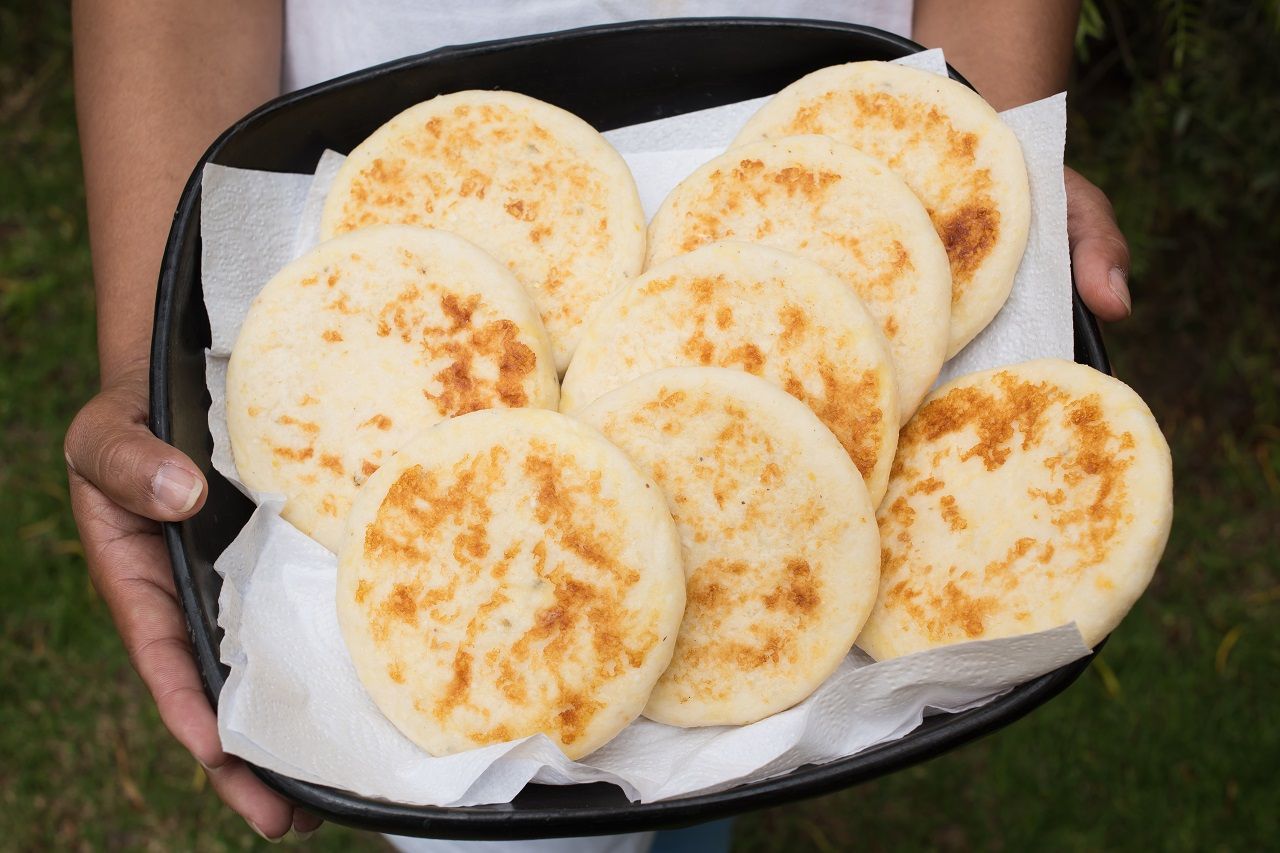The basic arepa is a pancake-shaped ground corn bread that’s grilled, fried, or baked and stuffed with a variety of ingredients. It can be sweet or savory, simple or complex. However it’s prepared, it’s a beloved food in South America — particularly in Colombia and Venezuela.
Arepas might be mistaken for a simple sandwich or a taco with a rounder shape, yet it is an altogether different beast with a rich history that begins in the Andes. The Timoto-Cuica people, a pre-Colombian civilization inhabiting the mountain range around what is now Venezuela, were probably the first to eat arepas. Though much of the now-extinct Timoto-Cuica culture remains mysterious, what is known is that they were expert farmers. They developed irrigation techniques and farmed on descending hillside steps (called terracing), which allowed multiple crops, including corn and cassava, to thrive.


